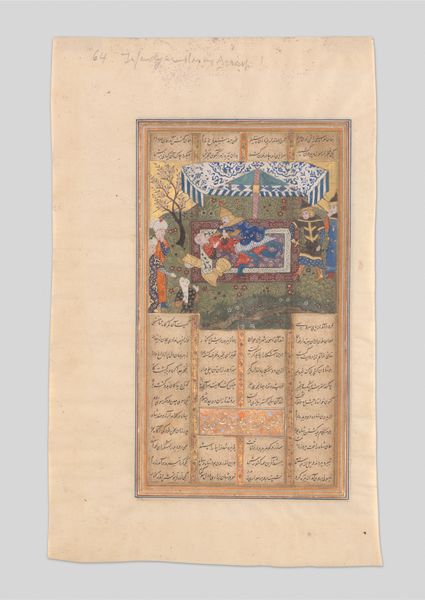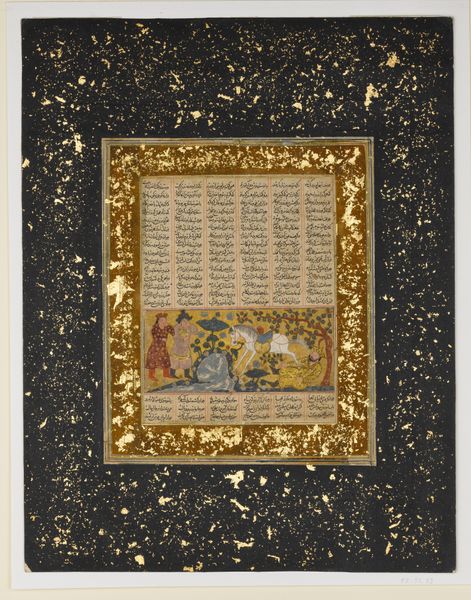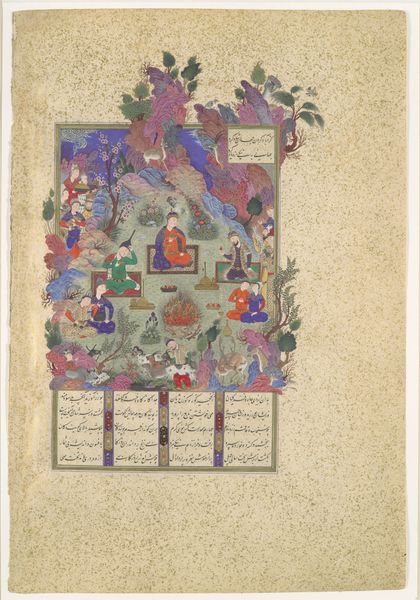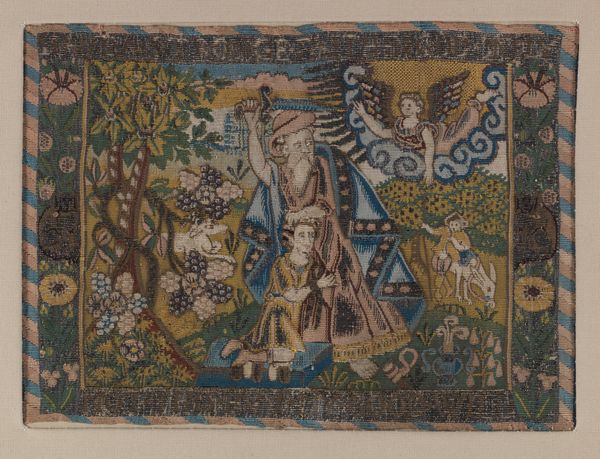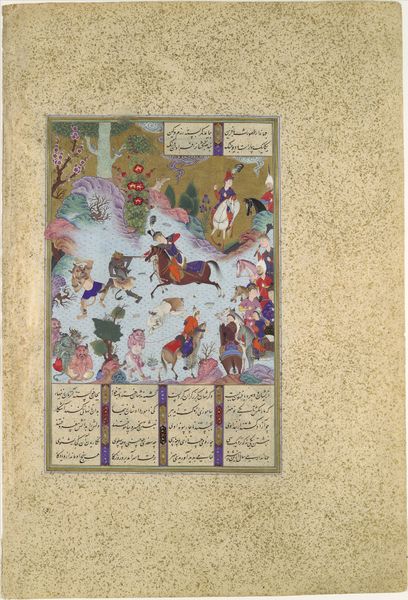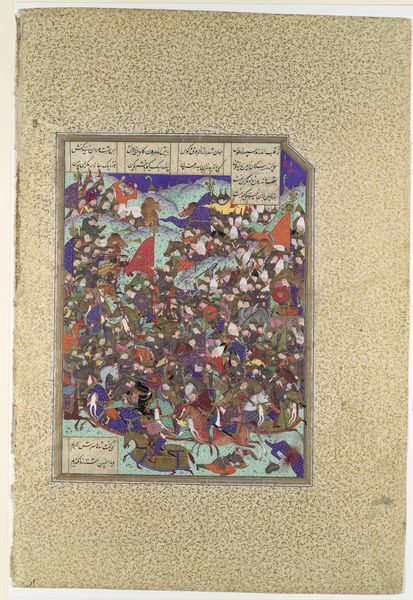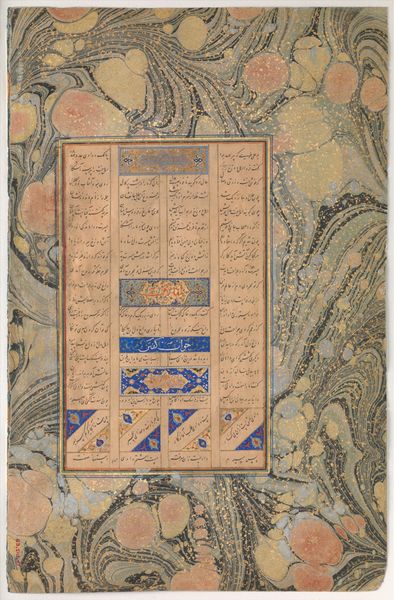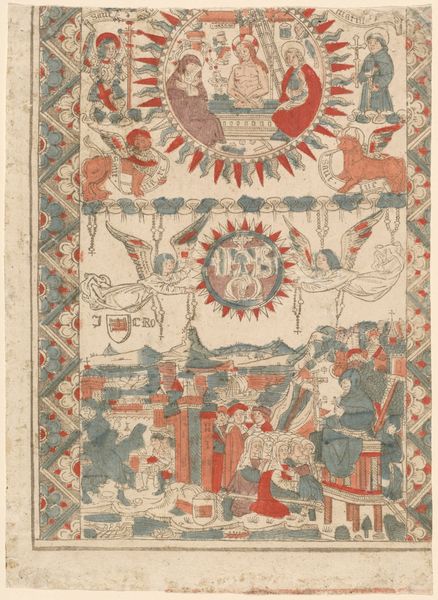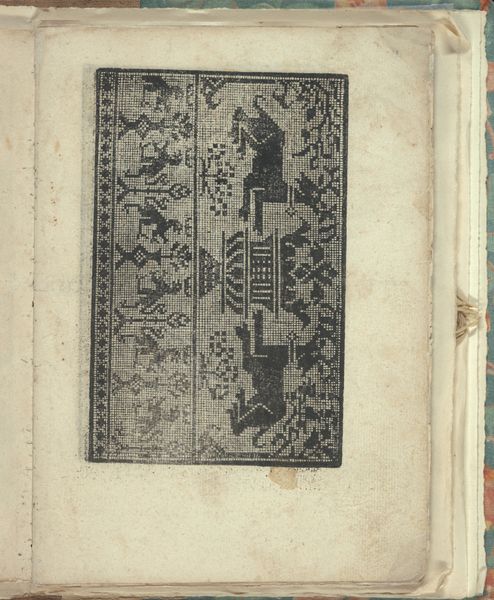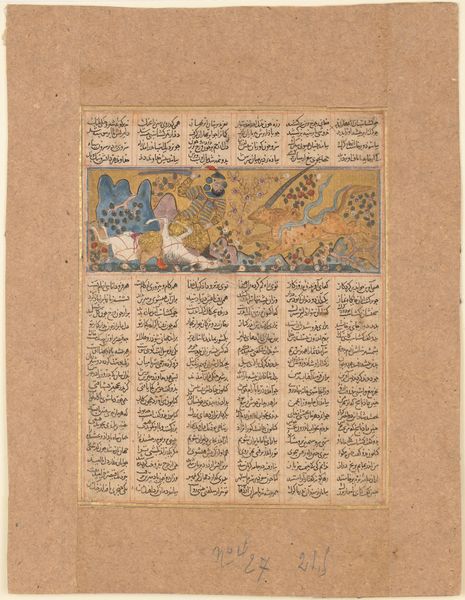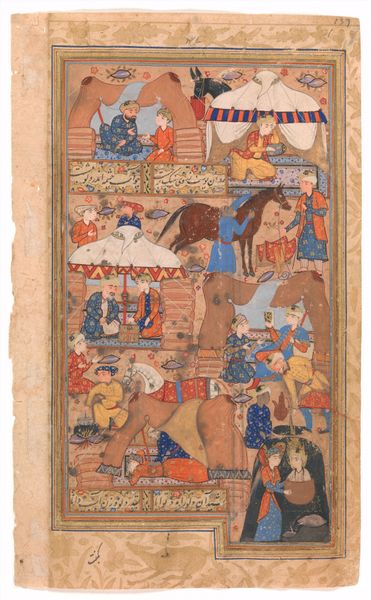
The Ascent of the Prophet to Heaven, page from the Khamsa of Nizami Safavid dynasty (1501–1722), 16th century, c. 1600
0:00
0:00
drawing, paper, ink, mural
#
drawing
#
asian-art
#
paper
#
ink
#
islamic-art
#
mural
#
miniature
Dimensions: Image: 26.7 × 18.4 cm (10 1/2 × 7 1/4 in.); Paper: 35.4 × 24 cm (14 × 9 7/16 in.)
Copyright: Public Domain
Editor: Here we have "The Ascent of the Prophet to Heaven," a page from the Khamsa of Nizami, made around 1600 during the Safavid dynasty. It’s rendered with ink and color on paper. What strikes me is how intricately crafted it is; every detail seems so deliberate and labor-intensive. How do you read this piece? Curator: What I see is a compelling artifact deeply embedded within a specific system of production and consumption. The luxurious materials – the inks, the paper, even the skill required – all point to a patron with significant wealth and power. Consider the social context. This wasn't mass-produced; each miniature like this represented considerable investment in time and resources. Who commissioned it and how would this affect its making? Editor: So you are saying the choice of material signifies the patron's wealth and influences the means of production. Are there other material clues, then? Curator: Absolutely! Think about the use of gold leaf – a material extracted, processed, and applied through specialized labor. The vibrant pigments would also have been sourced and prepared meticulously. The book was not only visually beautiful, but also a carefully produced commodity. How does that frame our understanding of the 'divine' scene depicted? It seems so tied up in the real-world labor behind it. Editor: That’s fascinating. I hadn't considered the sheer effort and materials involved as part of the meaning. I was initially focused on the spiritual aspects, but you've really opened my eyes to the economic and social realities embedded in the work. Thank you. Curator: Precisely. This shows how art can tell many histories, far beyond what is represented.
Comments
No comments
Be the first to comment and join the conversation on the ultimate creative platform.
